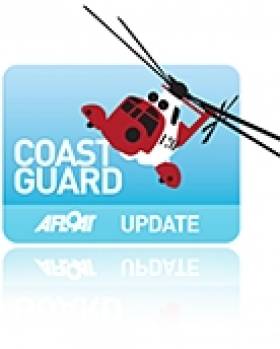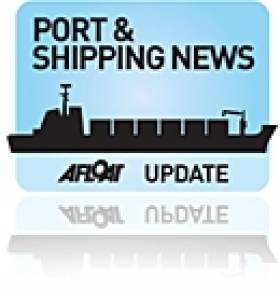Displaying items by tag: Caernarfon
#CaernarfonSAR – The launch of the Caernarfon civilian UK search and rescue (SAR) helicopter service was marked today (Wednesday 8 July) in a ceremony held at the new SAR base at Caernarfon Airport in North Wales.
Bristow Helicopters Ltd, is operating the search and rescue Helicopter service for the UK on behalf of HM Coastguard. The UK limited company was awarded the ten year UK SAR contract by the Department for Transport in March 2013. By 2017, it will deliver the service from ten bases strategically located close to areas of high SAR incident rates.
The Caernarfon base went live on 1 July 2015 and has already responded to taskings from the Aeronautical Rescue Coordination Centre (ARCC).
Bristow crews are delivering the UK SAR helicopter service on behalf of HM Coastguard with state-of-the-art helicopters, equipped with the latest search and rescue technology including night vision, mission management and increased onboard medical capabilities.
The base was officially opened by Richard Parkes, Director of Maritime Operations at the Maritime and Coastguard Agency (MCA), and was attended by representatives from the Royal Air Force 22 Squadron. Also in attendance were other search and rescue organisations and invited guests with whom Bristow and HM Coastguard have been working closely, and who have been instrumental in preparing the new service.
Speaking at the launch event Mr Parkes said: "HM Coastguard has been providing search and rescue helicopter services in northern Scotland and southern England for over thirty years. Today I am immensely proud to be welcoming our first civilian base to Wales.
"I would also like to pay tribute to the outstanding work that RAF Valley has carried out over many decades, both inland and out to sea. We will ensure that their legacy is continued."
Samantha Willenbacher, Director of UK Search and Rescue at Bristow Helicopters Ltd, said: "Bristow Helicopters Ltd has a long history in providing search and rescue services on behalf of HM Coastguard and the commencement of services from our first Welsh base is a significant milestone. It is important that we acknowledge the incredible service and numerous lives saved by the crews of 22 Squadron at RAF Valley and we are honoured to be continuing this vital emergency service from our new base in Caernarfon.
"I would like to thank all of those here in Caernarfon and around the UK who have supported us in our preparations for the service going live. We look forward to becoming a part of your community."
The company's aircraft and crews have been at the Caernarfon base since May 2015 making preparations for the service going live and conducting a raft of training exercises with local search and rescue partners.
The base is led by Anglesey-local Chief Pilot Captain David Kenyon, a former SAR Unit Commander, Senior Pilot and Instructor at nearby RAF Valley. Capt Kenyon joined the RAF in 1992 and flew SAR tours from bases at Leconfield, Lossiemouth and Boulmer before moving to Valley. In 2006 he received the Air Force Cross, one of the country's highest gallantry awards, following the rescue of a climber who had suffered serious injuries in a fall close to the summit of Glyder Fach in Snowdonia in atrocious weather conditions. Since leaving the RAF in 2009 Capt Kenyon has worked in a number of countries including most recently Ireland as Chief Pilot and operational SAR captain with the Irish Coastguard in Sligo.
Captain Kenyon said: "This area is very much home for me and I am looking forward to providing this essential service to my local community. The role is very similar to the one I had during my military time and I know the area of operations very well.
"We are extremely grateful to the local community and to those at Caernarfon Airport for making us feel so welcome. It has been a pleasure in recent weeks to work closely with many of the other search and rescue organisations in the region in preparation for the service going live; their experience and professionalism is a real asset to the community."
Roy Steptoe, Director of Caernarfon Airport, said: "We welcome the opening of Bristow's new search and rescue base at Caernarfon Airport and the investment that has been made in the new facilities. This is a vital service for the community and we are proud to be able to support the operation."
Former New York ferry cruises Menai Straits
The vessel departed Caernarfon and passed under the famous Telford Suspension road bridge and Britannia railway bridge. In addition the cruise provided viewing opportunities of Snowdonia and beyond. After several hours the vessel returned to the county town of Gwynedd with its impressive castle.
Interestingly, the Queen of the Seas was originally built for service in a career serving on the far side of the Atlantic Ocean, as a New York ferry plying the River Hudson. The 92-passenger capacity ferry was sold to European owners in 1941 and was transported across the Atlantic onboard another vessel.
In recent years, there have been similar cruises on the Menai Staits operated by the Waverley Excursions Ltd, Bristol-based Balmoral which has transited through the narrow strait with its notorious dangerous currents.
























